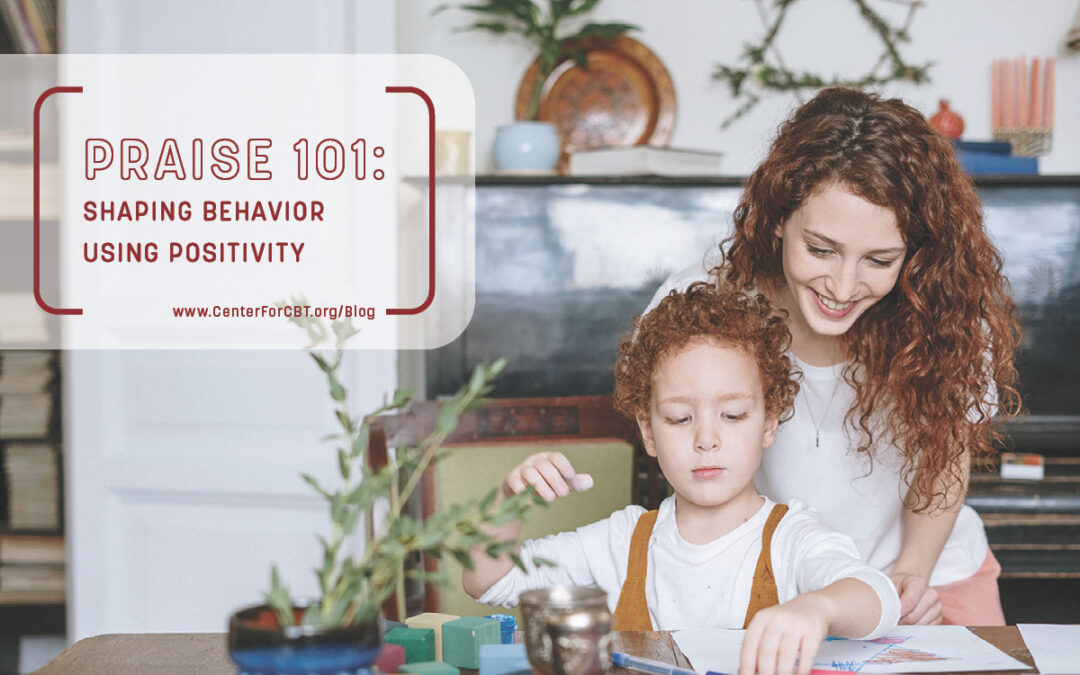In adjusting to a school year that exists online for many students, it seems that a new crop of challenges has sprung up for parents, adding yet another layer of frustration to working from home. The dishes don’t get put away, the laundry doesn’t get folded, and toys pile up so much that you can hardly walk through the room— even though you’re certain you’ve asked your child to help clean up a dozen times, at least! It’s an uphill battle for parents and children alike. We try to stay positive by offering praise and support, but when we find ourselves saying the same things over time and again, it may start to feel like praise isn’t enough. But in times as challenging as these, it’s important to remember that praise is enough.
Consider, when was the last time you praised your child? How often do you offer praise, and how is it delivered? If you’re having trouble thinking of the specifics, you’re not alone. When faced with this question, many parents find they don’t praise their child as much as they think they do. It can be all too easy to overlook opportunities for praise, especially if you find you have a tendency to focus on the negative behaviors. Praise is a positive form of attention for your child and a potent reinforcer of behavior. But praise is strategic, and is most effective when it is used accurately and consistently, and offers specificity.
Understanding Praise
Oftentimes parents may confuse love with praise, but they are not one in the same. Saying “I love you” to your child is a form of affection that is unconditional and given freely. Praise, on the other hand, is a parenting strategy that can be used to help manage and shape behaviors in the home through the reinforcement of positive actions and decisions. That being said, praise comes in two forms: unlabeled, and labeled.
Unlabeled praise is generic and not specific to any particular action or behavior. While saying phrases to your child like “awesome,” “keep it up,” or “you rock” are well-intentioned, they are a superficial form of praise that do little to shape behavior. Instead, it’s important to use labeled praise when addressing your child’s actions. Labeled praise is behavior specific, such as “great job putting the books back on your shelf” or “awesome job getting your homework done.” This type of praise has multiple advantages:
- It tells your child exactly what they did correctly.
- It implicitly tells them what you’d like to see more of.
- It increases the likelihood of your child engaging in that positive behavior again.
- It helps you, as the parent, recognize the positive behaviors rather than focus on the negative behaviors.
- It ultimately strengthens your relationship with your child.
Rather than using negative behavior as an opportunity to explain what not to do, it is more effective to offer praise for positive behaviors to help your child learn what to do.
How to Praise
While it can be difficult to look past negative behaviors, especially when you know you’ve addressed them with your child before, a more effective way to promote positive behaviors is to “catch your child being good.” This requires you to be more aware of your child’s behaviors so that you can better recognize and praise the things they’re doing well. Find opportunities to “praise the opposite” and highlight your child’s positive behaviors. In doing this, it’s important to phrase the opposite behavior in a way that is positive to best emphasize to your child what is good about their actions. For example, say your child has an issue with talking loudly. Rather than “not yelling,” the positive opposite of that behavior would be “using an indoor voice.” This means that your labeled praise would look something like, “I love the way you’re using an indoor voice.”
|
Problem Behavior |
Positive Opposite |
Labeled Praise |
|
Defiance |
Following directions |
“Thank you for following directions.” |
|
Hitting |
Being safe with hands |
“Good job being safe with your hands.” |
|
Daydreaming during homework |
Focusing to complete work |
“Great job focusing to complete your work!” |
|
Talking Loudly |
Using an indoor voice |
“I love the way you’re using an indoor voice” |
This sort of praise structure is a formula for effective parenting. It helps make the implicit explicit, clearly defining what constitutes good behavior. It’s also important to keep in mind that children often behave based on their parent’s mood. In being less reactive towards negative behaviors, you are modeling to your child what appropriate behavior looks like. It’s a healthier way to manage your own frustrations while simultaneously promoting a trend in positive behavior.
Mind the Criticism-to-Praise Ratio
While it’s important to find opportunities to praise your child, that’s not to say you won’t have moments when steam is coming out of your ears. The key is finding the criticism-to-praise ratio so that even when you do address a negative behavior, your child still receives positive feedback at other times. Think of it as a 1:3 ratio; for every one criticism you offer to your child for a negative behavior, find three opportunities to praise them for positive behaviors. This helps parents avoid focusing heavily on the negatives. Harping on the things you don’t like your child doing can make them feel frustrated and lead to an increase in negative behavior. Offering your child an appropriate amount of support and validation will help them feel better about themself and more likely to engage in positive behaviors.
Beware of the “Zap Trap”
As you focus on praise, it’s important to be mindful of falling into the “zap trap,” where you negate your praise by including a reminder of the negative behavior. It’s easy to do, and you might not even realize it at first. The zap trap is a sort of dig, or reference to a time when your child was not acting appropriately, and using it can undo the positive effects of praise. For example, say your child has decided to be helpful by putting away their laundry. You thank them, but then point out their error, or you say how nice it would be if they had done it yesterday when you asked. This sort of praise has a negative connotation that can be confusing to your child, making them feel incapable or not good enough even when they have exhibited a positive behavior. When offering praise, it is most beneficial to both you and your child to focus on the positives to encourage more of the desired behavior.
Keeping Track of Praise: Our Challenge to Parents
Praise is a useful parenting tool, but it doesn’t fix everything. There will still be times when your child doesn’t listen, when you find yourself arguing with your child, or repeating yourself over and over again. But praise is most successful when used consistently and wisely and, as is the case with any skill, when you practice it. So this week, see if you can take a step to improve your own praising skills by making a chart to record how you interact with your child. This is a helpful way for you to keep track of your child’s behaviors, and to also be mindful of your own response. At least once a day, make a written note of the situation, your child’s behavior, and the reaction or praise that you gave in response. Using this exercise is a great way to monitor and improve your own skills, and in turn, your child’s behavior. By being enthusiastic and supportive of your child’s positive behaviors, you will be teaching them how to act appropriately and ultimately strengthen the relationship that you have with each other.


